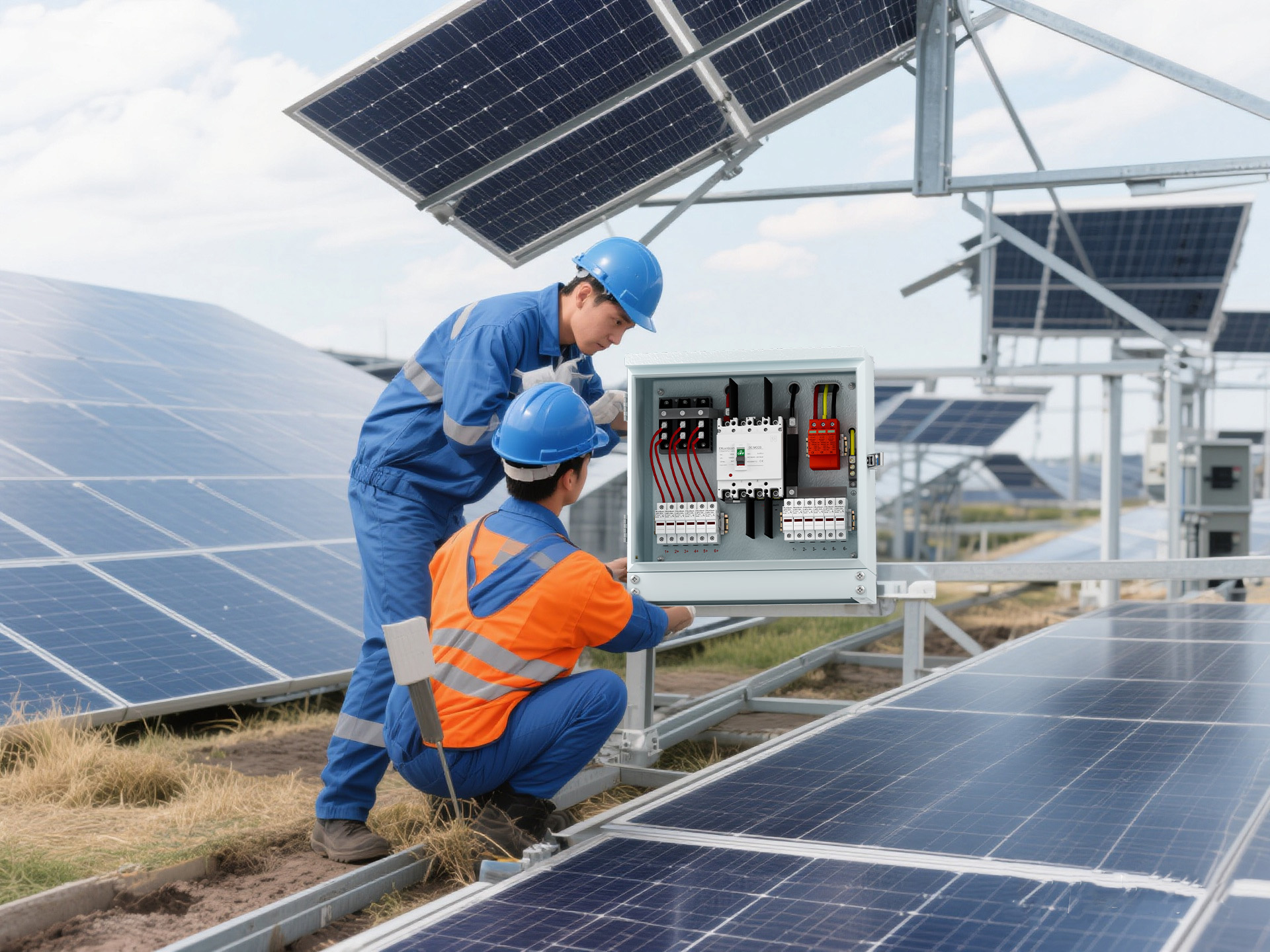
- English
- Español
- Português
- русский
- Français
- 日本語
- Deutsch
- tiếng Việt
- Italiano
- Nederlands
- ภาษาไทย
- Polski
- 한국어
- Svenska
- magyar
- Malay
- বাংলা ভাষার
- Dansk
- Suomi
- हिन्दी
- Pilipino
- Türkçe
- Gaeilge
- العربية
- Indonesia
- Norsk
- تمل
- český
- ελληνικά
- український
- Javanese
- فارسی
- தமிழ்
- తెలుగు
- नेपाली
- Burmese
- български
- ລາວ
- Latine
- Қазақша
- Euskal
- Azərbaycan
- Slovenský jazyk
- Македонски
- Lietuvos
- Eesti Keel
- Română
- Slovenski
- मराठी
- Srpski језик
How to Choose the Right Combiner Box for Your Photovoltaic System
Choosing the right combiner box is a crucial step in ensuring the efficient, safe, and long-term operation of a photovoltaic system. As an intermediate link between solar panels and inverters, it can collect direct current from multiple panel strings, protect the system from electrical faults, and support monitoring functions. Faced with numerous optional products, here is a comprehensive guide to help you make an informed decision.
1. Clarify System Requirements
First, evaluate the specific needs of your photovoltaic installation, as these will determine the specifications of the combiner box.
System Scale: For small residential systems, a compact combiner box with 4-8 input channels may be sufficient. Large commercial or utility-scale projects require combiner boxes with 16 or more input channels to handle dozens of panel strings.
Panel Configuration: Match the number of input channels to your panel string design. For example, if you have 11 panels per string and a total of 16 strings, a 16-channel combiner box is essential to avoid overloading.
Environmental Conditions: Consider the installation location. In desert areas, combiner boxes need to have an IP65 or higher protection rating to resist dust and extreme temperatures (-40°C to 70°C). Coastal areas require anti-corrosion coatings to resist salt spray.
2. Pay Attention to Core Technical Parameters
Key specifications directly affect performance and safety:
Rated Current: Ensure the combiner box can withstand the maximum current from the panels. For 550Wp N-type TOPCon panels (common in large projects), choose fuses and circuit breakers with a rated current of 15-20A per channel, and the total output current should match the input capacity of the inverter.
Voltage Compatibility: Select DC-rated components (usually 1000V or 1500V) to be consistent with the system voltage. Higher voltage (1500V) systems can reduce cable losses, which is very suitable for utility-scale installations.
Protection Functions: Prioritize combiner boxes with the following functions:
Fuses or circuit breakers: Prevent overcurrent caused by short circuits or panel failures.
Surge Protection Device (SPD): Resist lightning strikes, which is crucial for outdoor installations.
Insulation monitoring: Alert you to ground faults, reducing the risk of fire.
3. Ensure Compatibility with System Components
The combiner box must seamlessly integrate with other photovoltaic equipment:
Solar Panels: Check if the input terminals match your panel cable type (such as MC4 connectors) to avoid adapter issues.
Inverters: Verify that the total output current and voltage of the combiner box are within the input range of the inverter. For example, a 225kW inverter works well with a combiner box that collects 16 strings of 550Wp panels.
Monitoring Systems: If you use intelligent operation and maintenance tools, choose a combiner box with an RS485 communication port to transmit real-time data (current, voltage, temperature) to your monitoring platform.
4. Evaluate Durability and Reliability
The combiner box must be able to withstand harsh conditions over a service life of more than 20 years:
Housing Material: Choose high-grade materials such as galvanized steel or aluminum alloy with anti-corrosion coatings. This is crucial in desert or coastal environments where dust, humidity, and temperature fluctuations are severe.
Heat Dissipation: Look for designs with ventilation slots or built-in fans to prevent overheating, especially in hot climates.
5. Consider Installation and Maintenance
Practicality is important for long-term operation:
Installation Flexibility: Wall-mounted or pole-mounted options should suit your site layout. For ground-mounted photovoltaic farms, weatherproof enclosures with easy-access doors simplify wiring and inspection work.
Identification and Wiring: Clear marking of input channels (matching panel strings) reduces installation errors. Modular designs with plug-and-play components speed up setup.
Accessibility: Choose a combiner box with a detachable cover and spacious internal space for easy fuse replacement, cable adjustment, and troubleshooting.
By matching the combiner box to your system scale, environment, and equipment, you will ensure efficient power collection, minimize downtime, and protect your investment. Whether for residential rooftops or utility-scale farms, the right combiner box is the unsung hero that ensures the smooth operation of the photovoltaic system.




